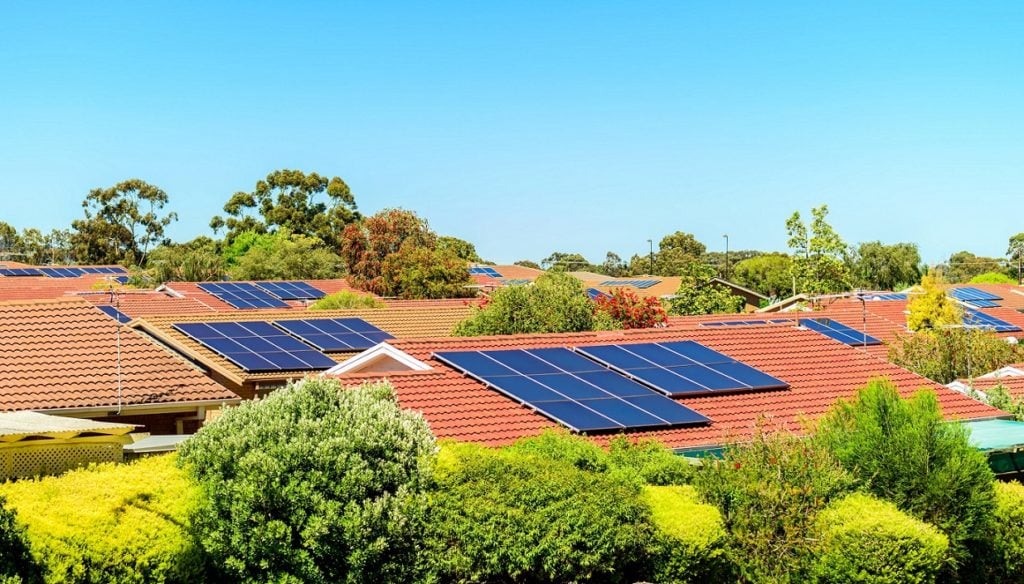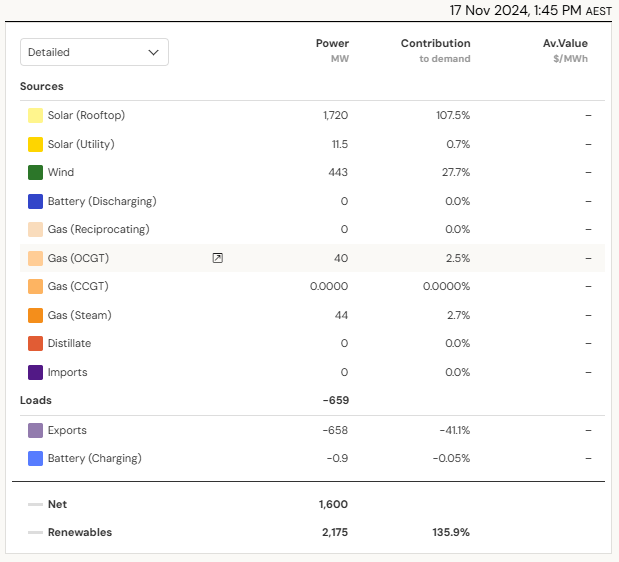
Rooftop solar PV in South Australia broke the 100% grid demand contribution on Sunday afternoon, peaking at 107.5%.
According to OpenNEM, at around 13:45 on 17 November, rooftop solar PV in South Australia provided 107.5% of the state’s demand, standing at around 1,720MW. This is the latest milestone the state has achieved, having broken the 100% threshold last month.
Try Premium for just $1
- Full premium access for the first month at only $1
- Converts to an annual rate after 30 days unless cancelled
- Cancel anytime during the trial period
Premium Benefits
- Expert industry analysis and interviews
- Digital access to PV Tech Power journal
- Exclusive event discounts
Or get the full Premium subscription right away
Or continue reading this article for free
On the other hand, utility-scale solar PV provided just 0.7% of demand, providing 11.5MW.

This is South Australia’s latest milestone in its energy transition and showcases the successful rollout of renewable energy technologies. In winter 2024, PV Tech reported that the state ran on over 100% renewable energy from 26 August to 1 September.
During this period, rooftop solar PV generated 21.1% of the 102.2% figure, around 56GWh generated over the week at an average price of AU$52.02/MWh (US$33). On the other hand, utility-scale solar provided 3.9% of the overall mix, around 10.4GWh, at an average price of AU-$30.96/MWh
South Australia eyes 100% renewable energy by 2027
South Australia’s prowess in the renewable energy sector has seen it target running on 100% wind and solar PV by 2027 and became the first state in Australia to pen a Renewable Energy Transformation Agreement with the federal government in July 2024.
The agreement will see the state support the development of at least 1GW of solar and wind power by underwriting developers. The federal support will also see it underwrite 400MW of new energy storage capacity to provide additional stability and flexibility to the grid as it transitions to variable renewable energy.
In signing the agreement, South Australia must commit to delivering its Hydrogen Jobs Plan, establish its own specific grid reliability mechanism and benchmark to replace the national framework and work with the federal government to implement policies, practices, and processes that improve community engagement.
Since South Australian penned the agreement, Western Australia became the second state to sign such an agreement, with the state eyeing a minimum of 6.5TWh of new wind and solar projects and 1.1GW of new storage to help keep the electricity grid stable.






